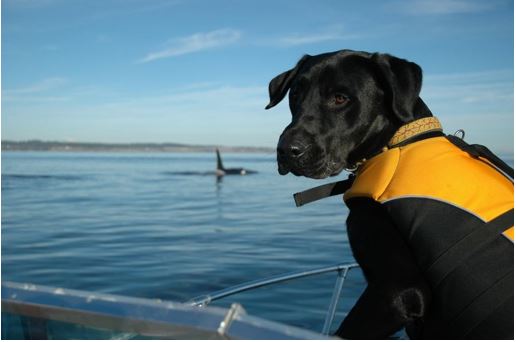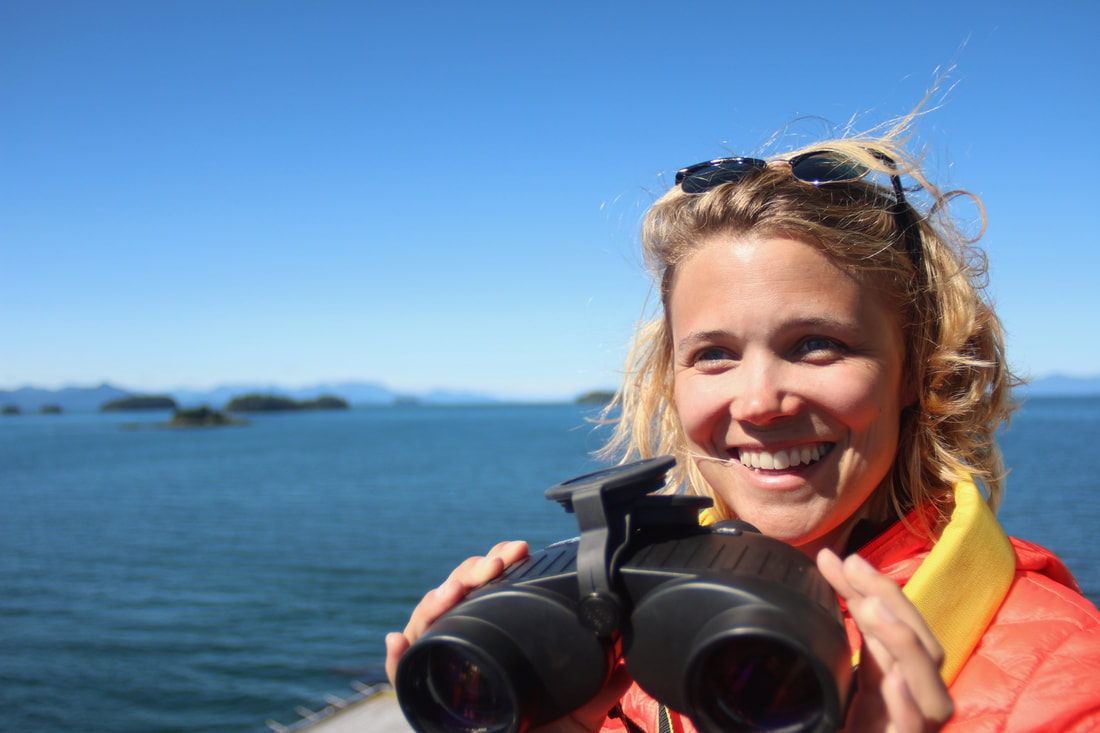|
Photo from the Center for Whale Research. One of the Conservation Canines doing his job finding southern resident killer whale scat. Every time I go to the Seattle Tacoma airport, I play a game that distracts me from my travel anxiety: I Spy a dog. Ten years ago I didn’t play this game— a dog at an airport was a rare sight— but nowadays a trip to SeaTac is not complete without seeing a service dog walking with its owner, a therapy dog on someone’s lap, and a security dog sniffing luggage of travelers.
Dogs have always had jobs. They were bred for jobs, and only recently did their job transition from things like “bird dog” and “herding dog” to full time companions. Some dogs have taken this career change in stride. In Seattle, it’s rare to go to a brewery and not find a chill pup laying by its owner, just happy to be there and receive pets and attention. Other dogs still have jobs, like those I see at the airport. Therapy dogs keep their owners steady in times of stress, and airport security dogs are trained to detect weapons and narcotics. There are those dogs, however, don’t conform to a standard domestic life, and aren’t well suited for more restrictive jobs that require calm demeanors. These dogs have energy that needs an outlet most owners can’t provide on a daily basis. They want to move constantly and obsessively. A lot of the time these dogs end up in shelters, being too much for their owners to handle. But what they really need is a career change. Due to their resilience, unbounded energy, and strong noses, dogs have made invaluable helpers in all sorts of conservation studies. They’re becoming a popular tool for researchers, with several organizations popping up around the world that train dogs for conservation research. One organization, Working Dogs for Conservation, looks specifically for “bad” or “crazy” dogs in shelters, and trains them to jobs like detecting dangerous invasive species, sniffing out illegal animal contraband to reduce poaching of endangered species, and even detecting diseases in livestock. In Seattle, Dr. Sam Wasser (Center for Conservation Biology, University of Washington), and dog training expert Barbara Davenport (PackLeader Detection Dogs) founded Conservation Canines. They train dogs to sniff out the poop, or scat, of endangered species over large landscapes. Their ideal detection dog “is intensely focused and has an insatiable urge to play”— and they will go to great lengths to play. These dogs spend their days hiking in search for scat, and when they find a sample, they get rewarded with a play session and their favorite toy. The scat samples they detect are then analyzed in the laboratory, where researchers can extract genetic, diet, chemical, and hormonal data from the poop to learn a lot about the species. Conservation Canines have even taken their work to the sea, training dogs to detect endangered southern resident killer whale poop. That’s right, they bring their dogs on boats, where they can sniff out orca poop over great distances in the ocean. These samples are used by all sorts of research working to conserve this iconic orca population, including my own research on parasite infections in orcas— studies that would be near impossible without the help of a specially trained dog leading the way to the samples. The unifying feature of these organizations is that they see the potential in rescue dogs and provide them with a new life where they get to go to a fulfilling job for the payout of playtime. I have heard the phrase “there are no bad dogs, just bad owners” in the past, but maybe replacing “owners” with “jobs” would be more appropriate as these former misfits become the heroes of endangered species conservation.
0 Comments
|
AuthorHi I'm Natalie. I'm a parasite ecologist, marine mammal researcher, and science communicator. Follow along :) Archives
March 2022
Categories |


 RSS Feed
RSS Feed